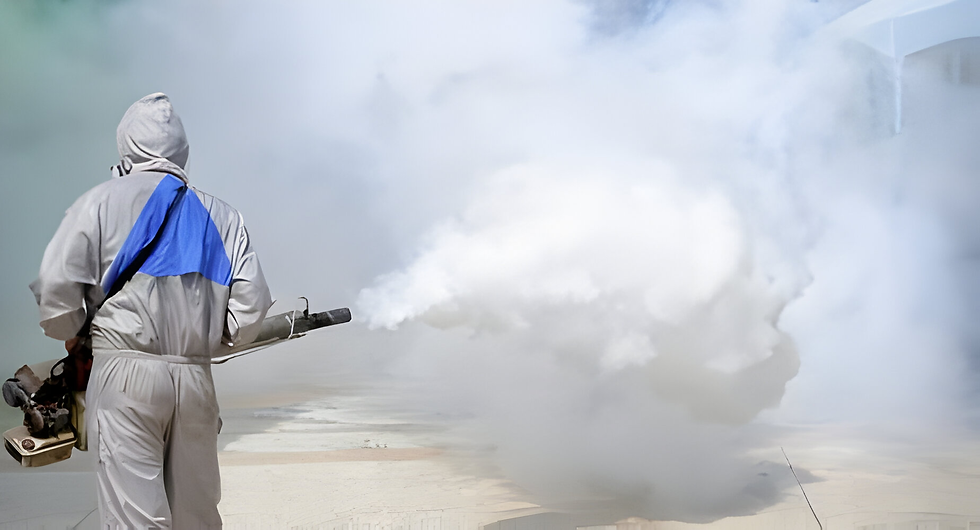Water features, from serene garden ponds to ornamental fountains, are integral components of many landscapes. They provide tranquil settings, attract wildlife, and can enhance the overall aesthetic of outdoor spaces. However, they can also inadvertently become breeding grounds for mosquitoes, leading to infestations that dampen the enjoyment of your outdoor oasis. As a mosquito removal service, understanding and managing the complex relationship between water features and mosquitoes is critical. Let's dive into how these elements interact and the solutions available to keep your yard mosquito-free.

The Attraction of Water for Mosquitoes
A Breeding Haven
Mosquitoes naturally flock to standing water to lay their eggs. Water features, if not properly maintained, offer a perfect environment for mosquito larvae to thrive. Female mosquitoes can lay hundreds of eggs that hatch in just 24 to 48 hours, starting a cycle that can quickly lead to an infestation.
The Stagnant Water Problem
Stagnation is key to the attractiveness of water features for mosquitoes. Water that lacks movement and circulation provides a safe haven for larvae, which require still water to develop. Consequently, water features that are poorly designed or inadequately maintained can become the main source of mosquito problems.
Design Considerations to Prevent Infestation
Planning for Movement
In the planning stages of any water feature, incorporate elements that promote water movement. The inclusion of waterfalls, bubblers, or fountains can disrupt the stillness and deter mosquitoes from laying their eggs.
Natural Predators
When designing a water feature, consider creating a habitat for natural mosquito predators. Fishes like koi or minnows feed on mosquito larvae, while plants like water lilies can provide shelter for other mosquito-eating insects.
Maintenance: The Key to Mosquito Control
Regular Cleaning
A fundamental step in controlling mosquitoes, as part of measures for Mosquito Prevention, is the routine maintenance of your water features. Regularly removing debris, such as leaves and twigs, that can decay and create an environment conducive to mosquito larvae is critical.
Water Treatments
Utilize environmentally safe water treatments that can prevent the development of larvae without harming other wildlife. Various biological larvicides can effectively control larvae populations.
Mosquito Removal Services: A Professional Approach
A professional mosquito removal service brings expertise and advanced solutions to tackle mosquito infestations involving water features.
Inspection and Assessment
A professional service will start with a comprehensive inspection of your water features to assess risks and signs of infestation. They will determine the best course of action tailored to your specific situation.
Integrated Pest Management
Experts often employ an integrated pest management approach, combining prevention, maintenance, and treatments to reduce mosquito populations effectively and sustainably.
Natural Removal Techniques
Embracing the Ecosystem
Foster an ecosystem within your water feature that naturally keeps mosquito numbers in check. Introduce plants that provide habitats for insects that prey on mosquitoes and other invertebrates that consume larvae.
Beneficial Bacteria
Bacillus thuringiensis israelensis (Bti) is a bacterium that targets mosquito larvae while being safe for plants, fish, and other wildlife. Utilizing Bti dunks or granules can be an effective natural treatment option.
Technological Interventions
Larvicide Dispensers
For larger water features, automated larvicide dispensers can provide a continuous treatment solution that requires minimal manual involvement while effectively keeping mosquito populations down.
Mosquito Misting Systems
Some mosquito removal services offer installation of misting systems that dispense fine mists of insecticides at predetermined intervals to reduce adult mosquito populations around water features.
Community-Wide Concerns
The Ripple Effect
Mosquito infestations are not limited to individual properties but can affect entire communities. Responsible management of water features, including larger bodies of water like neighborhood ponds, is crucial.
The Power of Education
Through educating homeowners and community members about the importance of maintaining their water features, mosquito removal services can help foster a proactive approach to mosquito control.
Long-Term Strategies
Landscaping with Purpose
Landscaping choices can influence the mosquito-friendliness of your yard. Select plants that repel mosquitoes and design your water features with prevention in mind.
Monitoring and Adaptation
Maintain a practice of regular monitoring and adapt your maintenance and treatment methods as necessary. Mosquito behavior and populations can change due to a variety of factors, including climate variables.
Conclusion
Water features can indeed bring joy and serenity to your landscape, but without proper attention, they can also bring about the unwelcome buzz of mosquitoes. The balance between enjoying the beauty of standing water and preventing it from becoming a mosquito breeding ground lies in thoughtful design, diligent maintenance, and, when necessary, professional intervention.
By understanding the dynamics between water features and mosquito infestations, and employing strategies from prevention to natural interventions and professional mosquito control services, your water features can continue to be a highlight of your outdoor space rather than a source of irritation. The key is to be proactive, stay informed, and not hesitate to leverage expertise when the situation calls for it. Your outdoor utopia awaits – mosquito-free.
Σχόλια